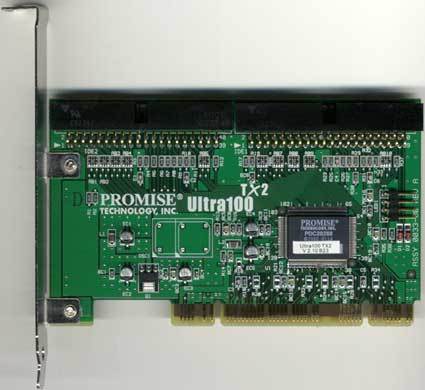RAID Without Additional Hardware: Do It Yourself With Windows 2000
Software RAID Requirements
Windows 2000 is able of striping any desired number of drives, regardless of their interface. You could, for example, stripe three IDE drives and one SCSI drive. While spanning allows to hook up several drives in order to use their total capacity, striping will orientate at the smallest drive. For example three 40 GB drives and one 8 GB drive will result in a total capacity of 32 GB (capacity of the smallest drive multiplied by the amount of drives). However, in order to achieve the best capacity and performance, you should stick to using drives of the same or similar types.
An additional IDE controller such as this Promise Ultra100 TX2 isn't as expensive as a RAID controller and will enhance both your configuration possibilities and number of useable drives for software stripesets.
How To Setup A Software RAID With Windows 2000
First of all you have to install the mass storage controller(s) and hard drives you want to use. After that, launch the Windows 2000 Management Console (simply run "compmgmt.msc /s") and open the Disk Management Folder inside the Storage category.
The lower frame at the right displays all drives and their partitions. Before you can create a stripeset you have to remove all partitions on the drives that you want to use (right-click the partition to get the options menu). Now you have to convert those drives into dynamic drives. Right-click the field left to the partition area and select "Convert To Dynamic Drive".
After restarting the system (required), you can right-click on the partition area of any drive you want in order to create a new partition. The Wizard allows you to create simple partitions as well as span or stripe the drives. Next, specify the sector size and disk label, have it automatically formatted, and you are ready to go.
Get Tom's Hardware's best news and in-depth reviews, straight to your inbox.
Current page: Software RAID Requirements
Prev Page IDE Vs. SCSI RAID Next Page Perfidies Of The Software RAID
Patrick Schmid was the editor-in-chief for Tom's Hardware from 2005 to 2006. He wrote numerous articles on a wide range of hardware topics, including storage, CPUs, and system builds.
